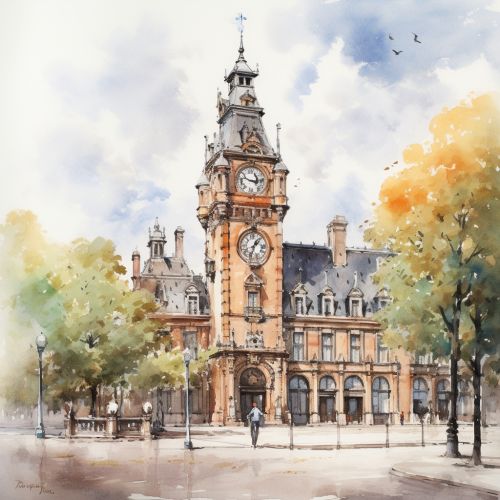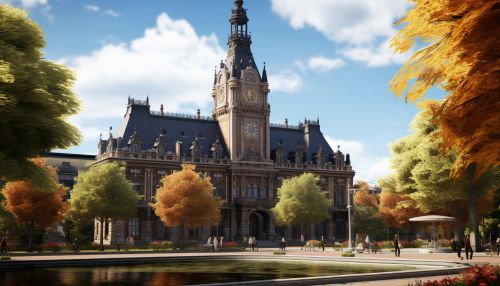University of Strasbourg
History
The University of Strasbourg is an institution with a rich history, tracing its origins back to the 16th century. The university was initially established as a Lutheran seminary in 1538, during the Protestant Reformation. It was then transformed into a full-fledged university in 1621 by the Holy Roman Emperor, Ferdinand II.


Over the centuries, the University of Strasbourg has seen numerous changes in its structure and governance. It has been influenced by the shifting political landscapes of Europe, particularly the alternating French and German control over the Alsace region. These changes have significantly shaped the university's academic and cultural identity.
During the French Revolution, the university was closed down as it was seen as a symbol of the old regime. It was reopened in 1808 under Napoleon's regime as the "Imperial University". The university was then restructured and renamed several times throughout the 19th and 20th centuries, reflecting the changing political climate.
In the aftermath of World War II, the university was split into three separate institutions: Louis Pasteur University (University of Strasbourg I), Marc Bloch University (University of Strasbourg II), and Robert Schuman University (University of Strasbourg III). This tripartite structure remained in place until 2009, when the three institutions were merged to form the current University of Strasbourg.
Academics
The University of Strasbourg is a comprehensive university, offering a wide range of undergraduate and postgraduate programs across various disciplines. It is divided into several faculties, including Arts, Humanities, Social Sciences, Law, Economics and Management, Science and Technology, and Health.
The university is renowned for its rigorous academic standards and its commitment to research. It is home to numerous research laboratories and centers, which contribute to advancements in various fields such as biology, chemistry, physics, mathematics, computer science, history, philosophy, and sociology.
The University of Strasbourg also places a strong emphasis on internationalization. It has established partnerships with numerous universities around the world, facilitating student exchanges and collaborative research projects. The university's diverse student body, comprising individuals from various nationalities, further enhances its global outlook.
Campus
The University of Strasbourg's campus is spread across various sites in the city of Strasbourg. The main campus, known as the Esplanade Campus, is located in the city center and houses the faculties of Arts, Humanities, and Social Sciences.
The university's other sites include the Illkirch Campus, which hosts the faculties of Science and Technology, and the Medical Campus, which houses the Faculty of Health. Each campus features a mix of historic and modern buildings, reflecting the university's blend of tradition and innovation.
The university also boasts a range of facilities to support its academic activities, including libraries, laboratories, lecture halls, and study spaces. In addition, it offers various amenities for students, such as accommodation, dining facilities, sports facilities, and student clubs and societies.
Notable Alumni and Faculty
The University of Strasbourg has been associated with numerous notable individuals throughout its history. Several Nobel laureates have been affiliated with the university, either as students or faculty members. These include Albert Schweitzer, who won the Nobel Peace Prize in 1952, and Martin Karplus, who was awarded the Nobel Prize in Chemistry in 2013.
Other distinguished alumni and faculty of the university include philosopher Hans-Georg Gadamer, physicist Jean-Pierre Sauvage, and former French Prime Minister François Fillon.
